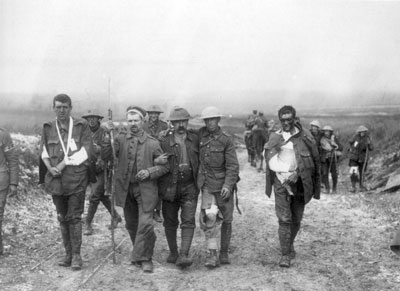
WWII: Maginot Line | Normandy | V-Weapon Sites | Arnhem
Further afield: Crete
| Home Tracing Military Ancestors Travel Advice CWGC Cemeteries Iron Harvest News Book Reviews Glossary Links Contact Me The Somme:
 
|
The Night Attack of 14th JulyThe plan to give the British back the initiative was a product of Rawlinson and Lieutenant-General Walter Congreve commanding XIII Corps. They believed that a night attack with a lightning bombardment out of the dead ground of Caterpillar Valley north of Montauban would catch the Germans off balance and punch a hole through the German second defence line. Haig remained unconvinced but was eventually won round to sanction the scheme. With operations in the north now at a standstill the British could concentrate all their artillery along a few miles of front between Bazentin-le-Petit and Longeuval. Under the cloak of darkness the assault troops of the British XIII and XV Corps moved out into no-man's-land guided into position by white-tapes positioned by the Royal Engineers thus significantly reducing the distance to cover once the barrage lifted.
At 3.20am the massive lightning bombardment of nearly 1,000 guns reached a crescendo and the infantry advanced. As predicted by Rawlinson and Congreve, the Germans, for once, were taken by complete surprise. Assisted in places by a creeping barrage, and with wire extensively cut by the concentrated artillery fire which included a high proportion of delayed-fuse high explosive shells, the attackers surged across the German positions, capturing the villages of Bazentin-le-Petit and Bazentin-le-Grand and threatening Longeuval and Delville Wood. The next day British cavalry went into action for the first time since 1914 in front of High Wood. Haig began to believe a breakthrough was possible. But it was too late. Orders to organise a second phase of advances could not be got through to the junior commanders on the ground and artillery could not be moved forward quickly enough across the broken ground. The Germans recovered their balance and the opportunity of a breakthrough was lost. |
